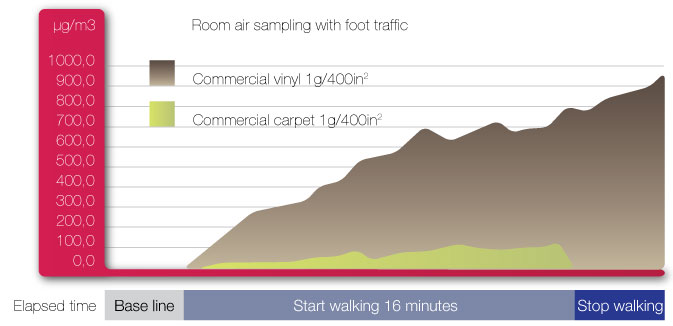Fine dust quantity indoors

(Source: Deutscher Allergie- und Asthmabund e.V. (DAAB) and Gesellschaft für Umwelt- und Innenraumanalytik (GUI Mönchengladbach) - Dr. Dipl.-Ing. Andreas Winkens.)
The average concentration of fine particles indoors was twice as high in interiors that had hard surfaces as in interiors with carpet, exceeding the limit values of 50g/m3 set in Germany for outside air. For sensitive people who have a fragile respiratory system, choosing a floor that traps dust and doesn’t send it into the air becomes a truly preventive action.
Carpet releases fewer particles into the breathing area
This test shows the amount of dust released in the air when walking on carpet during 16 minutes, compared to a hard surface with the same dust load. Not only is there much more dust released into the air when walking on a hard floor, the amount of dust also keeps rising after one stops walking.

(Source: Cleaning and foot Traffic Emissions Analysis, Prof.Testing Laboratory, Dalton GA, Asbury G., 2002)